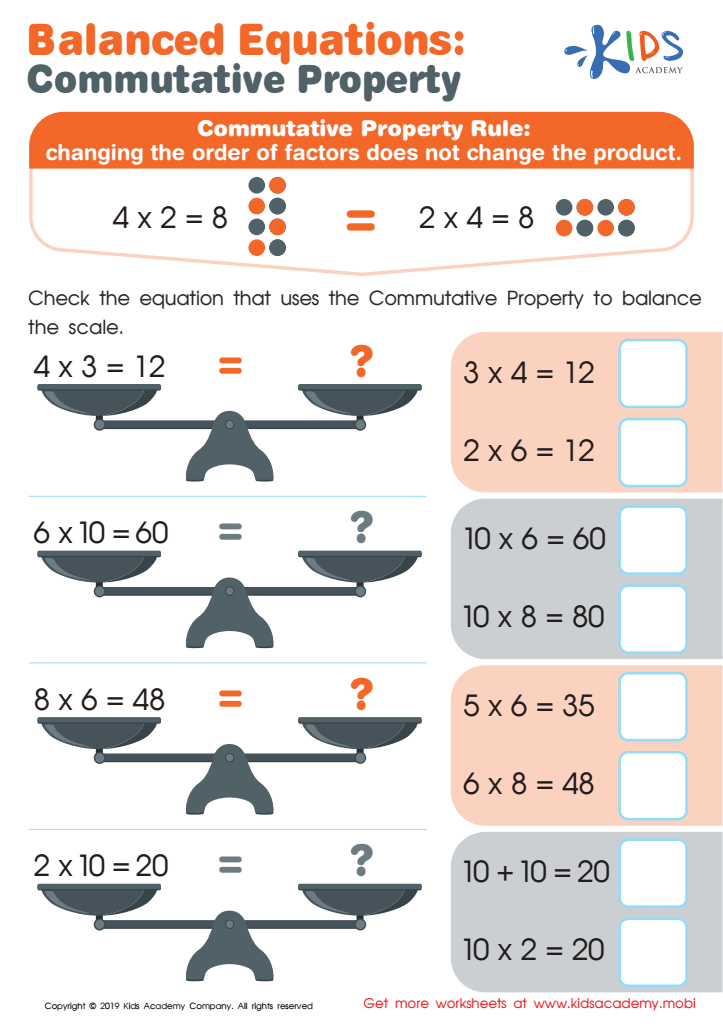Solving simple equations Worksheets for Kids
1 filtered results
-
From - To


Balanced Equations: Commutative Property Worksheet
Question/Answer
What does the Solving simple equations skill mean when it comes to Grade 3 Multiplication learning?
The "Solving simple equations" skill in Grade 3 Multiplication learning refers to the ability of students to solve basic multiplication equations. At this level, students typically learn to find an unknown factor in an equation, such as solving for x in equations like 4x = 12 or 5x = 15, thereby reinforcing their understanding of multiplication concepts.
How to test a Grade 3 student’s Solving simple equations skills?
To test a Grade 3 student's ability in solving simple equations, you can provide them with basic one-step addition or subtraction equations using small numbers. For example, ask them to solve equations like "x + 3 = 5" or "7 - x = 2".
How to train the Solving simple equations skill in Grade 3 students learning about Multiplication?
To train Grade 3 students in solving simple equations involving multiplication, gradually introduce them to the concept of finding an unknown factor. Start with concrete objects and pictorial representations for visual understanding. Employ consistent practice with multiplication fact families and use fill-in-the-blank style problems (e.g., 3 × __ = 9) to reinforce the relationship between multiplication and division.
 Assign to the classroom
Assign to the classroom










